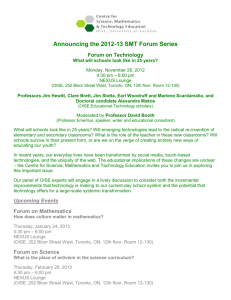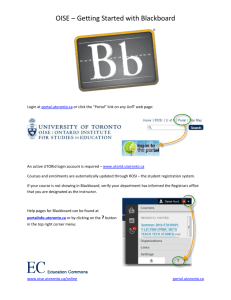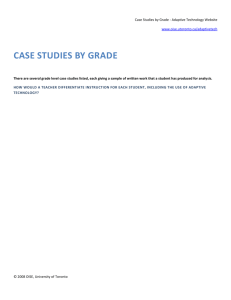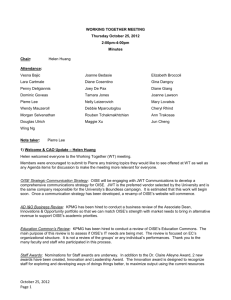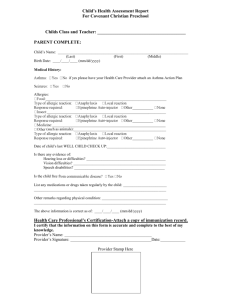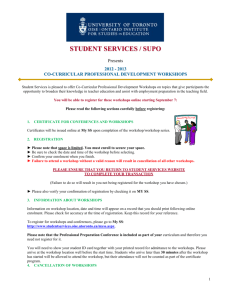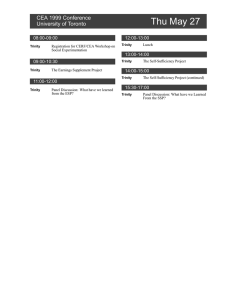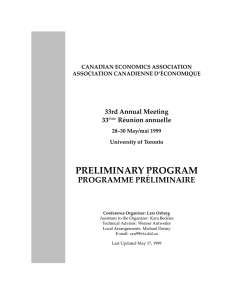Finding Common Ground - Muscle Control
advertisement
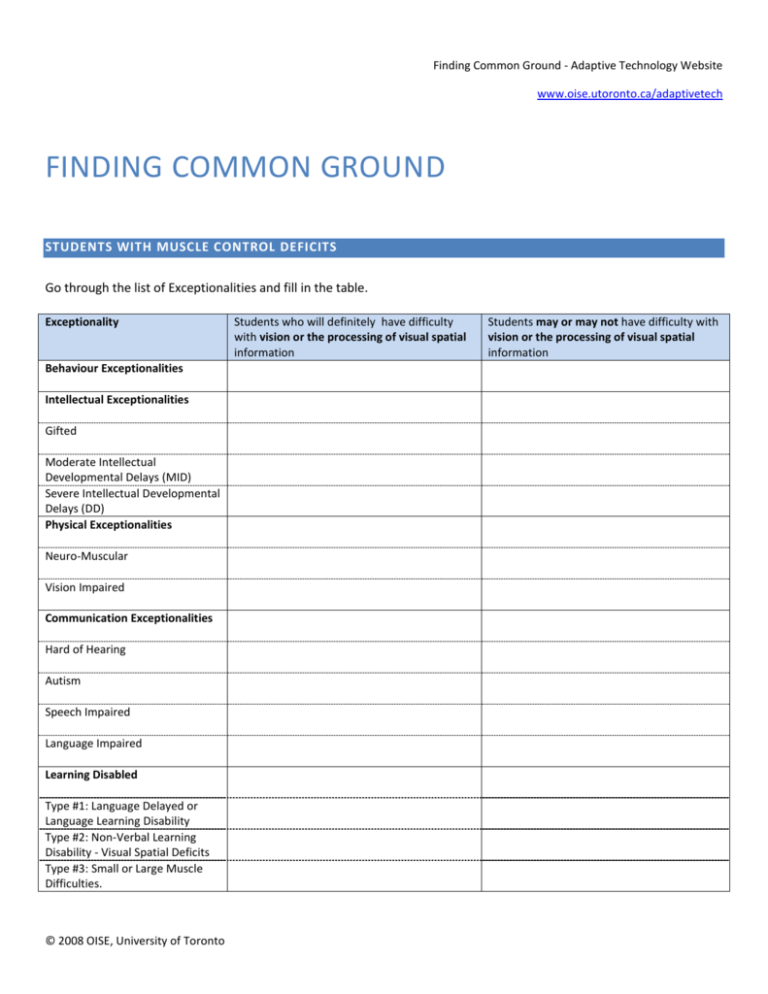
Finding Common Ground - Adaptive Technology Website www.oise.utoronto.ca/adaptivetech FINDING COMMON GROUND STUDENTS WITH MUSCLE CONTROL DEFICITS Go through the list of Exceptionalities and fill in the table. Exceptionality Behaviour Exceptionalities Intellectual Exceptionalities Gifted Moderate Intellectual Developmental Delays (MID) Severe Intellectual Developmental Delays (DD) Physical Exceptionalities Neuro-Muscular Vision Impaired Communication Exceptionalities Hard of Hearing Autism Speech Impaired Language Impaired Learning Disabled Type #1: Language Delayed or Language Learning Disability Type #2: Non-Verbal Learning Disability - Visual Spatial Deficits Type #3: Small or Large Muscle Difficulties. © 2008 OISE, University of Toronto Students who will definitely have difficulty with vision or the processing of visual spatial information Students may or may not have difficulty with vision or the processing of visual spatial information Finding Common Ground - Adaptive Technology Website www.oise.utoronto.ca/adaptivetech What type of difficulties do you predict students with large muscle difficulties will have in a class? (Students who may be clumsy or use walkers or wheel chairs). What type of difficulties do you predict students with small muscle difficulties will have in a class? Think of a lesson you have taught and determine how you could have differentiated your instruction or made accommodations for students who had difficulties of this kind? Can you improve these deficits? The following is a list of all the technologies available in our lab. After researching and experimenting with each, determine which would or would not be applicable to students with Muscle Control deficits? Justify your answer. Clicker5 - writing support and multimedia tool CoWriter 4000 Solo - editing supports Write: Outloud Solo - text-to-speech support Premier Literacy Suite - suite of 10 tools to support reading and writing AlphaSmart - portable word-processing tools Intellikeys - customizable touch keyboard © 2008 OISE, University of Toronto Finding Common Ground - Adaptive Technology Website www.oise.utoronto.ca/adaptivetech Premier - Literacy Suite - suite of 10 tools to support reading and writing Kurzweil - digitize text and read using text-to-speech Screen Magnification Software ZoomText - enlarge display and read outloud JAWS - translates text to audio output Intellikeys - customizable touch keyboard Dragon Naturally Speaking - translates spoken language into text Kidspiration - graphical mapping tool Inspiration- simple graphical mapping tool Smart Ideas- graphical mapping tool © 2008 OISE, University of Toronto Finding Common Ground - Adaptive Technology Website www.oise.utoronto.ca/adaptivetech How can you use these technologies in class to not only differentiate instruction for specific students, but using the principles of Universal Design, make you classroom and lesson inclusive for all students? Are there other technologies to use for Universal Design, or other ways of making those aspects of your lessons that involve muscle control accessible to all? (Remember that some students may have visual-motor or hand-to-eye coordination difficulties and therefore have difficulties with such things as copying notes from the board). © 2008 OISE, University of Toronto
